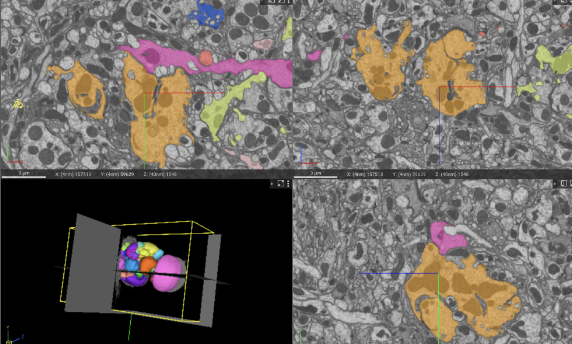
Polus Center for Data Research
At PCDR, we are advancing a future where biomedical discovery is accelerated through open, interoperable, and high-performing data systems. As stewards of a collaborative research ecosystem, we support the development of AI-driven tools, standardized workflows, and open-source platforms that enable scientists to work smarter, faster, and more collaboratively. Our mission is to empower the biomedical community with the infrastructure, training, and technologies needed to unlock new knowledge and drive collective progress.
The Polus Center for Data Research (PCDR)
At PCDR, we provide a powerful ecosystem of tools and platforms that accelerate biomedical discovery through data-driven research and open collaboration. Our core capabilities include:
Notebooks Hub
A coding interface designed for cloud-based creation, execution, and visualization of scripts, analyses, dashboards, and prototype GUIs.Pipeline
An interactive environment for building, executing, and monitoring computational workflows—enabling reproducible, scalable research pipelines.
Explore
Dynamic applications for visual data exploration that help researchers uncover patterns, drive insights, and spark discovery across large datasets.Data Catalog
An interoperable resource that organizes and connects datasets to streamline access, promote reusability, and ensure data integrity.
Nathan Hotaling Ph.D
Center Director
Leadership at The Polus Center for Data Research
Dr. Nathan Hotaling brings over 17 years of experience in biomedical research and data science to Novagen and the Polus Center for Data Research (PCDR). He has led teams of 80+ data professionals, driving the creation and expansion of Data Science, reproducible research, and secure data practices into government contracting and consulting where he and his team supported innovative research in large scale (100s of TBs and beyond) biomedical data analysis. His role in private industry, in partnership with the National Institutes of Health (NIH), was to oversee the development of the Polus Platform, an advanced open-source cloud and high-performance compute-based data analysis platform that integrates novel artificial intelligence, statistical methods, reproducible and traceable analyses, and dynamic data exploration tools into a cohesive platform. He has also built teams of clinical and microscopy image analysis engineers, real-world evidence pharmacoepidemiologists, cheminformaticists, molecular modeling experts, and -omics researchers who are focused on data quality and harmonization, hypothesis-driven drug discovery and clinical best practices for diseases spanning the translational spectrum from COVID-19 to cancer. This work caused him to realize that the tools, platforms, and processes set up by his teams needed to reach a wider audience and that a community needed to be created to continue to grow and support these critical components of scientific research. With that drive, he has joined Novagen and begun to build the PCDR.
Professional and Research Background Before PCDR
Before starting PCDR, his professional journey included postdoctoral research at the National Eye Institute (NEI) and the National Institute of Standards and Technology (NIST). There, he focused on developing deep learning algorithms and pipelines to analyze cell therapy tissues and optimize nanofiber scaffolds for regenerative medicine. This work is part of the quality control pipeline for a Phase I clinical trial using autologous induced pluripotent stem cells to treat patients with macular degeneration, which is the first of its kind in the US. His earlier academic background includes a Ph.D. in Biomedical Engineering from Georgia Tech and a Master of Science in Clinical Research from Emory University, where he studied immune responses to carbohydrates presented from biomaterial surfaces and developed statistical models to understand various systems from clinical to educational. This diverse research experience equipped him with a solid foundation in translational science, computational modeling, and data analytics, which he brings to his work at Axle Informatics.

